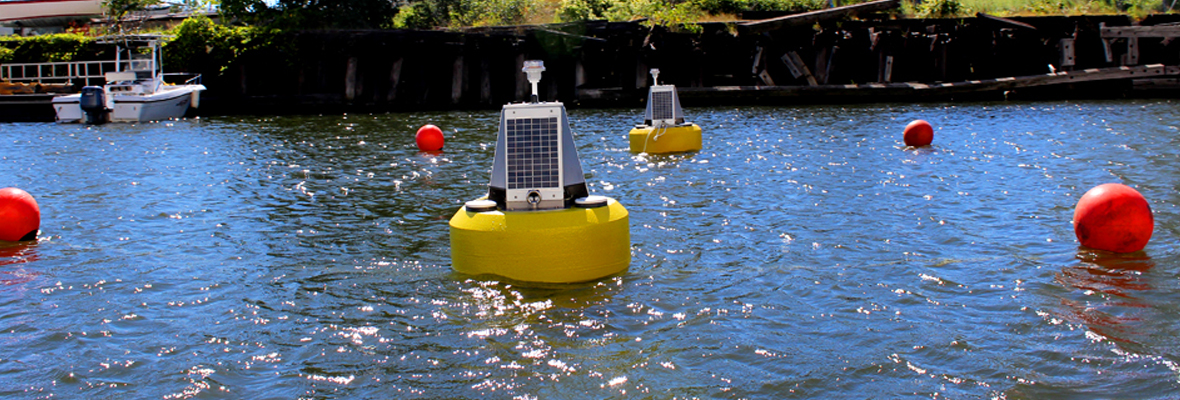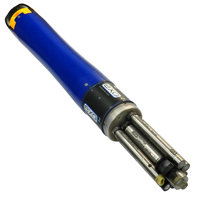Research and monitoring of water quality demands reliable, highly accurate data. Funding for these kinds of research projects and monitoring solutions are competitive even though water supplies frequently provide drinking water for many people; so water monitoring buoy systems can offer a perfect solution.
A water monitoring buoy station typically measures a number of water variables, including water quality, waves, and currents. To do this, the station consists of several components, including a data logger, buoy platform, telemetry equipment, solar power, temperature string, mooring hardware, sensors, and sondes. By customizing the instrumentation and features of a water monitoring buoy station, you can create the ideal buoy for your individual application, within budget.
In this post, we’ll focus on parameters and measurements related to water monitoring buoy systems.
Measuring Parameters With Water Monitoring Buoy Systems
Sediment transport and deposition; algae, phytoplankton, and chlorophyll; chromophoric dissolved organic matter (CDOM); conductivity, salinity, and total dissolved solids (TDS); dissolved oxygen (DO); pH; turbidity, total suspended solids (TSS), and clarity; temperature; and solar radiation and photosynthetically active radiation (PAR) are all parameters that a water monitoring buoy system might measure. Each of these is measured in slightly different ways using unique tools.
Sediment, or the mix of organic and inorganic materials that water, ice, or wind can carry, might include soil-based, minerals such as sand, silt, and clay, or decomposing inorganic biogenic and organic materials such as eroded mineral sediment and decomposing algae. Sediment transport or sediment load is the movement of sediment by water.
Various ecosystems benefit directly or indirectly from sediment deposition and transport which creates habitats, provides nourishment, and more. However, excess sediment can cause problems with scour, DO levels, and other issues. A water monitoring system can help monitor for scour near critical infrastructure.
Algae, phytoplankton, and chlorophyll are all linked to harmful algal blooms, red tides, fish kills, and problems with eutrophication. The easiest way to measure these parameters is by monitoring for chlorophyll with a chlorophyll sensor. This kind of sensor provides in-situ chlorophyll measurements in water.
Chromophoric dissolved organic matter (CDOM) is the product of decaying material in aquatic environments that affect light absorption, among other factors that influence water quality. Fluorescent dissolved organic matter or simply FDOM, means the portion of CDOM that fluoresces, and is frequently measured in place of CDOM in water.
The easiest way to measure CDOM is by using a water quality sonde with a specialized sensor or fluorometer in-situ. These are deployed most simply as part of a water monitoring buoy system, but can also be deployed by hand.
Conductivity, salinity, and total dissolved solids (TDS) measurements have to do with how readily water passes electrical current. This is important, because things like alkalis, carbonate compounds, chlorides, dissolved salts, sulfides, and other inorganic materials affect how easily electrical current can be passed, and they also affect water quality. For the most part, water managers derive TDS measurements from conductivity, even though some agencies, regions, and states create a maximum TDS level instead of setting a limit for conductivity. Conductivity is measured using conductivity meters and conductivity electrodes.
Dissolved oxygen (DO) refers to how many non-compound, free oxygen or O2 molecules are in water. It is a critical water quality parameter because of how much impact it has on aquatic organisms. (DO does not refer to or include the bonded oxygen molecule that helps make up the H2O water molecule.) Oxygen churns into water from the air thanks to turbulence, storms, waves, and similar kinds of physical action.
DO is typically measured either as a percent of air saturation or in milligrams per liter (mg/L), although in some situations scientists will report DO in micromoles (umol) or parts per million (ppm). The relationship between air saturation and DO varies with air pressure and temperature, and water salinity.
To measure DO concentrations from air saturation, calculate the sample’s salinity and temperature, and use them in Henry’s Law to calculate the DO concentration. More simply, use a DO sensor and a DO meter to measure DO concentration.
pH defines how acidic or basic water is logarithmically based on figures between 0 and 14. Each lower number refers to water that is ten times more acidic, with 7 being neutral. If the pH of water is too high or too low, the aquatic organisms living within it will die. pH also impacts how toxic and soluble heavy metals and chemicals are in water. Monitor pH with a pH meter and a pH sensor as part of a water monitoring buoy system.
Turbidity, total suspended solids (TSS), and clarity all have to do with how transparent water is and how easily light can penetrate it. These metrics also have to do with how much nutrients are in water and how readily particles of organic and inorganic matter will scatter light particles in the water column.
TSS and suspended sediment are both reported in milligrams of solids per liter of water (mg/L). Collecting, filtering, and then weighing a sample of water is the most accurate technique for measuring TSS. Use a turbidity meter, either Nephelometric Turbidity Unit (NTU) or Jackson Turbidity Unit (JTU), to measure turbidity.
Water temperature is essential to water quality assessment. Temperature affects water quality itself, but also water’s chemical and physical properties, along with compound toxicity; concentrations of dissolved oxygen and other dissolved gases; conductivity and salinity; oxidation-reduction potential (ORP); pH; rates of metabolism and photosynthesis; and water density. Water temperature can be measured with a simple thermometer or temperature sensors such as thermistors as part of buoy systems.
Solar radiation and photosynthetically active radiation (PAR) is electromagnetic energy that radiates from the sun, powering photosynthesis and all other metabolisms on Earth. There are three relevant ranges, or bands, along the spectrum of solar radiation: ultraviolet, infrared, and visible (PAR). Multi-parameter PAR sensors are important to weather monitoring, and some also operate underwater.
Physical Measurements With Water Monitoring Buoy Systems
Water monitoring buoy systems are also capable of physical measurements such as streamflow and wave height and speed. These kinds of physical measurements are essential to emergency preparedness, predicting weather and preventing dangerous infrastructure failures.
To calculate streamflow, first, you must measure the stage, or the gage height of the water’s surface, at a set place in the river or stream. Gage height can be measured with a stilling well attached to a stationary structure or installed in the river bank, a vented pressure transducer inside a metal or PVC pipe along the shore, or a non-contact ultrasonic or radar water level sensor. Along with stage, you’ll need rate of discharge, or the volume of water that is in motion per unit of time—usually in gallons per day or cubic feet per second.
Easier and quicker is the Acoustic Doppler Current Profiler (ADCP) which can be used either at a stationary deployment or mounted on a watercraft. The ADCP measures both depth and velocity using Doppler technology. When deployed underwater in a fixed location—such as on a data buoy—an ADCP can also measure the orbital velocity of waves and calculate wave parameters.
Monitor It All With A Single Buoy System
When it comes to research on and monitoring for water quality, only reliable, highly accurate data is sufficient. A water monitoring buoy station is fiscally responsible and scientifically useful, typically measuring a number of water parameters and measurements. To find out more about which particular configuration of buoy platform, data logger, mooring hardware, solar power, telemetry equipment, temperature string, sensors, and sondes is optimal for your application, within budget, reach out to us here at NexSens and Fondriest, or read more about our monitoring equipment here.
Equipment
The XB-200 is ideal for water monitoring applications requiring portability and quick deployment, yet strong enough for rough water.
The YSI EXO represents the next generation of water quality instruments from YSI. The EXO2 sonde includes six sensor ports and a central anti-fouling wiper option.
WQData LIVE is a web-based project management service that allows users 24/7 instant access to data collected from remote telemetry systems.





0 comments